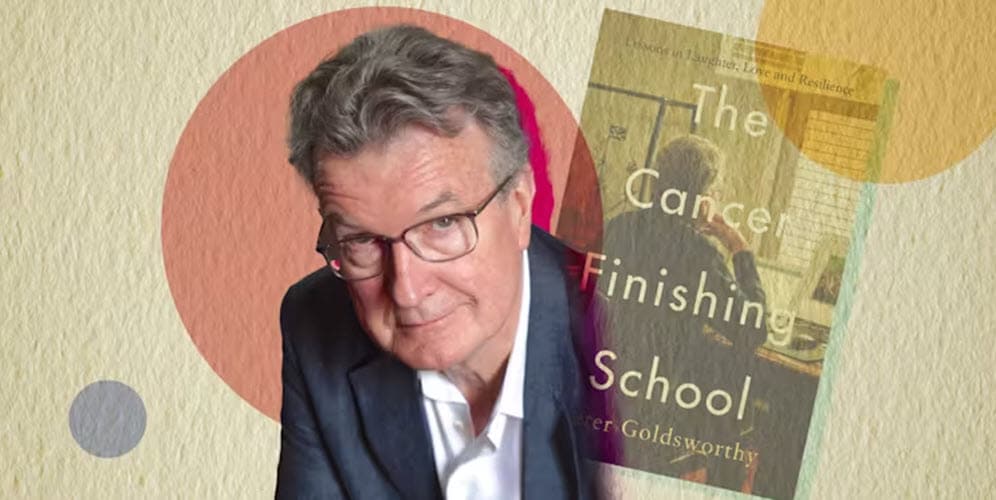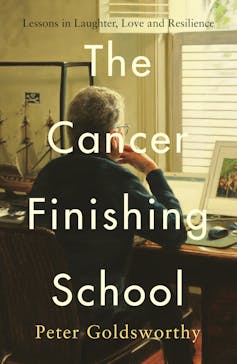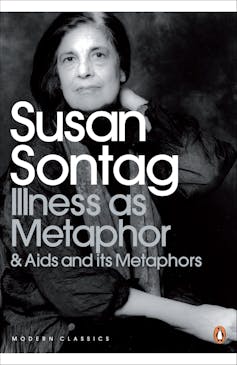In his entertaining cancer memoir, Peter Goldsworthy explores the ‘necessary narcissism’ of illness

Illness memoir is based on a tension between the general and the particular. The writer presents (to use a medical term) as both representing all sufferers of a particular malady – in this case, myeloma – and a unique individual experiencing a specific, unrepeatable event. Peter Goldsworthy, who is both a GP and a prize-winning writer, is better equipped than most to engage with this tension.
Indeed, one of the reasons The Cancer Finishing School is so exciting (if I can use such a word in this context) is because it so effectively deals with this. It ties together the experiential and the abstract, the intellectual and the embodied, and the everyday and the extraordinary (not to mention other tensions more specific to cancer, such as between rationalism and magical thinking).
Review – The Cancer Finishing School by Peter Goldsworthy (Penguin)
Myeloma is a type of blood cancer that develops in the bone marrow and is both “an incurable disease” and a “good cancer to get”.
His memoir follows a simple narrative arc, familiar to illness memoirs (or “autopathography”) : diagnosis (accidentally via a scan of a problematic knee); treatment (with chemotherapy); hospitalisation (for a stem-cell transplant); and the return home (for recuperation).
And yet, Goldsworthy, the good writer-doctor that he is, makes this familiar journey utterly compelling. The reasons for this are, to use a term favoured by doctors, multifactorial.
At one level, Goldsworthy’s account is gripping because the simple facts are inherently interesting. Stem-cell transplant is an extraordinary medical procedure – half science-fiction, half medieval trial by ordeal – involving liquid mustard gas and the killing off of the patient’s bone marrow. This process, Goldsworthy notes, has the alarming mortality rate of 10% after 200 days.
The chemotherapy is also, perhaps surprisingly, fascinating. In this instance, it employs a steroid hormone called dexamethasone to counter the side effects of the chemotherapeutic agents. Dexamethasone produces periods of intense creativity and activity in Goldsworthy. Recreating “Dex bliss” is the source of much febrile inventiveness in the first third of The Cancer Finishing School.
A time of intense living
But “good material” is not in itself enough. Goldsworthy puts a lot of effort into representing what we might call the phenomenological intensity of not just the “dex” mania, but the entire “journey” of cancer.
Faced with the prospect of death, Goldsworthy recounts a time of intense living, and he gives a powerful sense of what that experience was like bodily and emotionally (a distinction that dexamethasone profoundly calls into question).

And while Goldsworthy’s style is characteristically unfussy, the memoir is filled with an equally characteristic intense use of word play, anecdotes and motifs that criss-cross the narrative. These give the work a complex structural harmony.
Sometimes those motifs might more accurately be called riffs, and such riffing is continuous with Goldsworthy’s marvellous use of jokes. Jokes, writes Goldsworthy, “are useful forward scouts when entering enemy territory, especially the no-go areas of my own head”. At another level, then, Goldsworthy’s memoir is absorbing because it is so entertaining.
That is not to say Goldsworthy “merely” deals with the sombre in comic terms. He can face the dark night of the soul square on, but the serio-comic is his habitual mode of attack. This mode is one that allows for important insights, borne out of an impressively nuanced and authoritative attention to its subject. For instance, Goldsworthy considers the “necessary narcissism” of illness in the following terms:
For once everything is about you – you might die, after all. The stakes don’t come higher. I have seen it in my patients too often to judge it. Like a rat in a loaf, the mere knowledge that you have cancer eats out a bigger and bigger space for itself in your brain: a mental black hole that consumes ever more energy, attention, worry, love and conversation, often uselessly. In short: the knowledge you have cancer can be a kind of cancer itself.
The nonjudgmental reference to patients is significant. While an individual’s reckoning with mortality is usually thought of in terms of a solitary person, one of the compelling features of The Cancer Finishing School is how Goldsworthy powerfully renders his experiences as inherently concerned with others.
Goldsworthy’s self is very much a “relational” one: part of a network of carers, family members (especially his partner, Lisa), friends and patients who fill the pages with their own stories, insights and jokes.
Some of the family and friends are well known, such as the Nobel laureate (and fellow citizen of Adelaide) J.M. Coetzee, the celebrated American writer Joan Didion (whose appearance makes for one of the book’s comic highpoints) and the late poet Les Murray.
These worthies all have terrific walk-on parts, though they are, perhaps inevitably, outplayed by Goldsworthy’s patients, whose stories braid his own experience of illness. These stories are sometimes hilarious, sometimes heartbreaking. I am haunted by the bereaved woman who hangs a wetsuit in her kitchen so she might glimpse it and momentarily think the figure is her dead son.
Goldsworthy makes it clear he is not exploiting these patients: he changes ages, names, genders and so on, and receives permission from those who are still alive to give it. And while it is important that these things are acknowledged, the most powerful element of such stories, when it comes to a virtual “ethics clearance” from the reader, is the evident sense of respect that accompanies these literary representations.
If anyone comes off badly in these stories, it is Goldsworthy himself. This is ultimately a work about education, after all, and Goldsworthy’s anecdotes are usually concerned with important lessons (in humanity, in humility).
Education, like illness, is a kind of journey, and Goldsworthy skilfully employs the tropes of schooling and roaming throughout The Cancer Finishing School. One of the notable aspects of Goldsworthy’s illness memoir is how self-conscious it is with regard to metaphor. He shows how the realm of the literal (illness, bodily death) swarms (to be metaphorical) with metaphor.

Ever since Illness as Metaphor (1978), by Susan Sontag (who suffered and ultimately died from cancer), certain metaphors have been viewed with suspicion when it comes to cancer – mostly obviously, that of cancer-as-battle.
Metaphor can, of course, have pernicious effects, but as Anita Wohlmann demonstrates, in Metaphor in Illness Writing: Fight and Battle Reused (2022), “even when a metaphor appears problematic and limiting, it can in fact be reused and reimagined in unexpected and creative ways”.
This revisionary power is, of course, the power of literature generally. But it has a special intensity when it comes to memoirs about cancer. Unlike cancer, the generative force of writing is life-affirming: a beneficial unfurling, rather than a terminal metastasising. This is made apparent in Goldsworthy’s case through the way he constantly shows the value – social, dialogic – of story.
Stories are as valuable to the speaker as they are to the listener. As Goldsworthy ruefully writes about first being diagnosed with cancer: “When the writing’s on the wall, it helps to get it down”.
David McCooey, Professor of Writing and Literature, Deakin University
This article is republished from The Conversation under a Creative Commons license. Read the original article.
Observer Voice is the one stop site for National, International news, Sports, Editor’s Choice, Art/culture contents, Quotes and much more. We also cover historical contents. Historical contents includes World History, Indian History, and what happened today. The website also covers Entertainment across the India and World.

